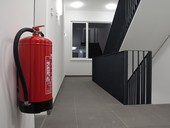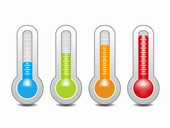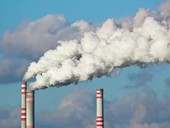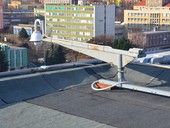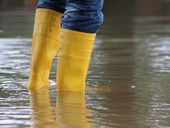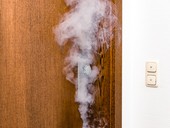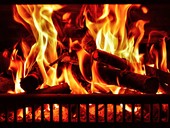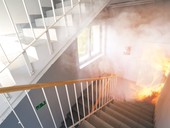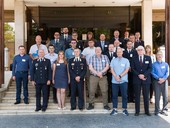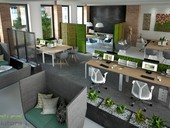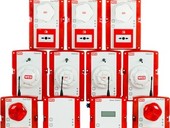The article explains some basic terms and obligations in the field of fire protection related to the activity and character of the association of owners of flats (or housing cooperatives) and ensuring fulfillment of obligations in the field of fire protection.
Archiv článků od 30.10.2017 do 9.4.2018
The US economy is the biggest in the world for the misfortune of all others, because in many ways it does not have sufficient control mechanisms and legislative support. Then the bubble of the US real estate market can grow to a huge size, after which the collapse will break down not only the financial sector but also the rest of the world. The financial losses were so great that they caused global consumption constraints, resulting in the global economic crisis of 2008, which was the worst in the post-war period. The script was the same everywhere in the world. Financial sector liquidity problems have restricted consumers' access to finance. Reduction in consumption = reduction in aggregate demand = slowdown in economic growth = increase in unemployment. All sectors have been affected, and economic subjects switch into the survival mode. The main goal is to reduce costs and increase efficiency. The best way to achieve these goals in the company's support activities is facility management. It has been known in the world for several decades, but in the conservative Czech corporate environment was used very little in the pre-crisis period. The definition of the essence and the goal of facility management is to reconcile working environment, workers and work activities to result in a more favorable environment, more efficient processes, and higher workforce performance, thereby achieving better economic growth and overall organization success. The authors want to point out an adaptation of facility management to the needs of companies to survive in the crisis period. During the crisis, both authors worked in the private construction sector, defining the essence and goal of facility management during the crisis as followed: facility management aims to maximize the minimization of costs, conditions and workers to the extent strictly necessary for the operation of the main activity. Paradoxically, the crisis has forced many businesses trying to survive, apply facility management on their structure, and the results show that facility management is working, achieving the desired goals. The same applies to one of the facility management outsourcing tools. To the onset of the crisis unpopular, as if untrusted instrument. However, the crisis has forced companies to narrow both the main and supportive activities = specialization / profiling and delegate many activities to external contractors = outsourcing. In the end, it turns out that such a “division of labor” has a positive effect on the efficiency and quality of the work and services provided.
One of the most well-known and most important greenhouse gases is carbon dioxide (CO2), which arises from natural processes, but the burning of carbonaceous fuels, especially fossil fuels, contributes significantly in the last century. This text focuses on CO2 emissions associated with energy transformations for the supply of energy to buildings.
Energy management is a generally used term under which many sub-activities are hidden. These activities should lead to an efficient energy management system and to reduce the production of greenhouse gas emissions. The energy management system is a continuous process that, when properly adjusted, leads to savings in the funds spent on consumed energy. The energy management system can be included in the Facility Management portfolio and preferably in the Property Management department.
If we think about the last twenty years, we realize how fundamentally changed the character of production and the nature of services and related nature of the work of many of us. Has the change affected only the tools that we use for everyday activities or the human factor operating new systems has changed the services as well?
The paper deals with the issue and classification of burning processes. Basic crisis situations and situations that occur during the existence of mankind are also fires. Examination of burning processes is closely related to fires, as they pose uncontrollable and unlimited burning in space and time. Fire occurring not only in the natural environment (eg forest fires) but also in various industrial, transport, manufacturing, processing and storage technologies, in accommodation facilities and elsewhere. Controllable and controlled burning processes can be useful for humans, for example: domestic heating, cooking and others. Uncontrollable combustion processes (fires) can cause serious losses and threats to health, life, property, tangible and intangible property and the environment. Burning is a set of complex physicochemical processes in which flammable substances and materials react with oxidizing agents and change to combustion products (combustion products). Burning is accompanied by intense radiation of heat, light energy, and smoke. The combustion processes can be classified according to different criteria.
The paper briefly specifies for flammable gases and vapors of flammable liquids: the creation and marking of flammability triangles, the possible procedure for shutting down the appliances with flammable substances out of service and, on the other hand, putting them into process in accordance with the relevant flammable triangles, the methods of estimation of the so-called Out- of -Service Fuel Concentration (OSFC) and so-called In-Service-Oxygen Concentrations (ISOC).
This article is focusing on international cooperation in the field of fire investigation. Authors have analyzed approaches on fire investigation system in different countries. Main part of this article consist of summary of experiences gained from Netherlands and United States of America and option of applicating them in Czech fire investigation system. In addition it also describes contribution of Czech fire investigators for CTIF Fire Investigation Working Group both in a past and for a future.
Nature represents for people their natural environment from which they evolved and which they had to adapt to survive. People lived in synergy with nature and perceived it with all the senses from time to time. However, with the progressive development of mankind, this relationship has been ostracized - either as a result of massive urbanization, industrialization, or technological change. This has resulted to such an extent that today we spend over 90% of our time in an artificially created environment. Biophilic design as a tool to reconnect people with nature plays an irreplaceable role in view of the significant positive benefits of this link.
zpět na aktuální články
